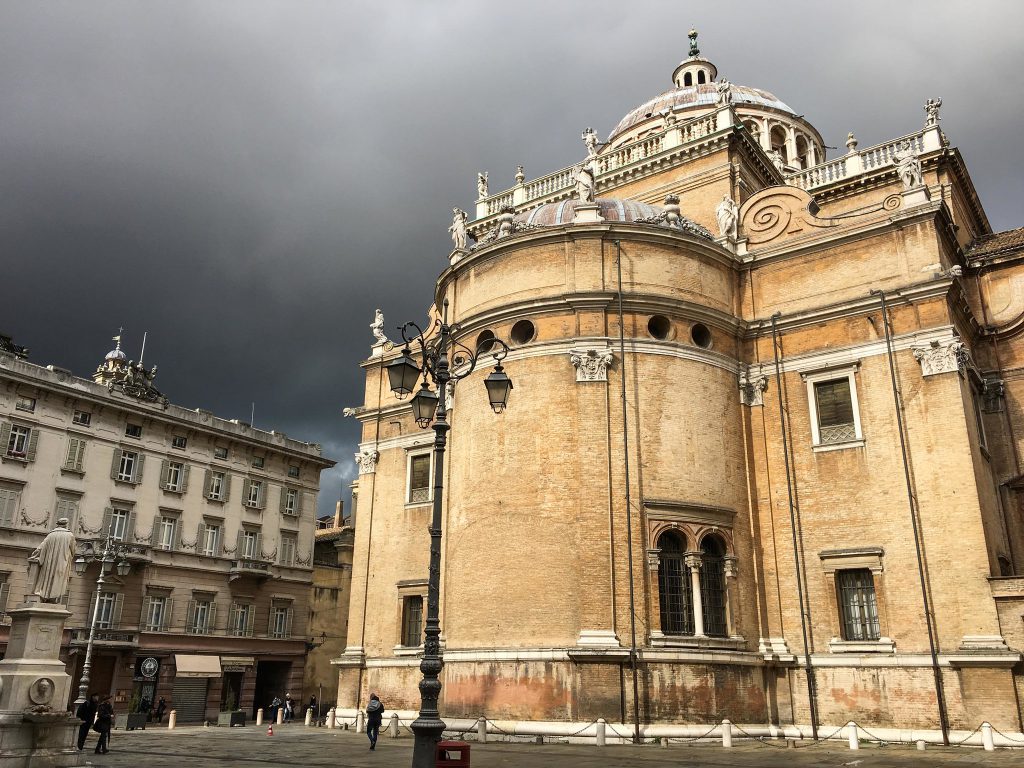Historical background
Founded in 183 A.D. by the Romans, Parma immediately became an important reference point for all of the surrounding plains.
In 569, the city was conquered by the Langobards and it became a Duchy.
From the IX century, the cloisters, mostly of Benedictine monks, encouraged a reclamation of the area, which favoured its recolonization and the recovery of the land for agricultural purposes. The bishops progressively assumed temporal power and Parma provided two Antipopes – Honorius II and Clement III – to the conflict between religious and political power about the ordinations.
The creation of a Comune (city governed by consuls), around the year 1140, signalled the beginning of the rebirth of the city after the tumultuous medieval period.
Parma was later conquered by the Visconti and dominated by the Sforza (1440-1500), which imposed their rule through important noble local families: the Pallavicino, Rossi, Sanvitale, and Da Correggio.
From 1500-1521 the city was controlled by the French, then by the Church. In 1545 Pope Paul III, wanting to create a buffer state between the Papal state and the Spanish power in Lombardy, made his illegitimate son PierLuigi Farnese Duke of Parma. Thanks to its financial means and power, the Farnese family ruled the city for two centuries. During this time, the city became a great capital, rich in monuments and works of art.
With the extinction of the Farnese family (1731), the Duchy passed on to Charles of Spain, son of Elisabeth Farnese and Philip V, and following the Peace of Aachen (1748) he managed to add a good portion of the lower regions to his territory. Parma then passed from Spanish control to the French.
After 1759, the decisive action of first minister Guillaume du Tillot imposed a modern state, founded on civil organization and industrial economy.
The Congress of Vienna of 1815 assigned the Duchy to Marie Louise of Austria, the second wife of Napoleon Bonaparte, who governed from 1816-1847.

At the beginning of the 1900s, unions and socialist organizations spread and strengthened throughout the City in strong opposition to the Fascist regime that governed Italy. The struggle with Fascism culminated in its most dramatic moment in August 1922, when Italo Balbo attempted to enter the popular “Oltretorrente” neighborhood.
The citizens organized themselves and were able to ward off the Fascist Blackshirts by lifting the famous barricades.
During the Second World War the enormous damages caused by the bombs and the numerous battles prompted the formation of a zone controlled by partisans, until the Liberation on 25 April 1945. The reconstruction and the economic development after the war helped Parma regain its original splendour.
The city started proving itself in the food industry, and relaunching its heritage and traditions helped it resume its position in the cultural and artistic world.
Since 2003, Parma is the seat of the European Food Security Authority (EFSA).
In December 2015, Parma was included in the UNESCO Creative Cities network as City of Gastronomy, the first Italian city awarded with this title. In June 2018, Parma was named the Coordinator of the Cities of Gastronomy Network.
In 2017, Parma celebrated 2200 years since its foundation and during 2020 and 2021 Parma is the Italian Capital of Culture.

